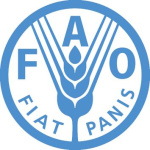- Industria: Agriculture
- Number of terms: 87409
- Number of blossaries: 0
- Company Profile:
Established in October 1945 with the objective of eliminating hunger and improving nutrition and standards of living by increasing agricultural productivity, FAO coordinates the efforts of governments and technical agencies in programs for developing agriculture, forestry, fisheries, and land and ...
Self-nourishing organisms capable of utilizing carbon dioxide or carbonates as the sole source of carbon and obtaining energy for life processes from radiant energy or from the oxidation of inorganic elements, or compounds such as iron, sulphur, hydrogen, ammonium and nitrites.
Industry:Biotechnology
Self-replicative genetic elements separate from main chromosome(s) of a cell. This definition usually excludes viruses, but the division is somewhat arbitrary. In bacteria, plasmids are the principal extrachromosomes; they encode functions which are not essential to the growth and division of the host cell. In eukaryotes, extrachromosomes may be either essential or dispensable. They may inhabit (i) the nucleus, e.g<i>.,</i> extrachromosomal rDNA molecules, yeast 2m plasmid; (ii) the cytosol, e.g., dsRNA molecules in fungi; or (iii) the cytoplasmic organelles, e.g., mitochondrial DNA, chloroplast DNA. Eukaryotic extrachromosomal elements may be recognized genetically by their failure to show segregation at meiosis.
Industry:Biotechnology
Sensor in which a standard electrochemical pH electrode is coated with a biological material. Many biological processes raise or lower pH, and the changes can be detected by the pH electrode.
Industry:Biotechnology
Sensor in which an oxygen electrode - a standard electrochemical cell which measures the amount of oxygen in a solution - is coated with a biological material which generates or absorbs oxygen. When the biological coating is active, the amount of oxygen next to the electrode changes and the signal from the electrode changes.
Industry:Biotechnology
Separating molecules by size or density using centrifugal forces generated by a spinning rotor. G-forces of several hundred thousand times gravity are generated in ultracentrifugation.
Industry:Biotechnology
Separation of homologous chromosomes during anaphase I of meiosis; separation of sister chromatids during anaphase of mitosis and anaphase II of meiosis. As soon as the sister chromatids have separated, they are each called a chromosome.
Industry:Biotechnology
Sequence of stages that a cell passes through between one division and the next. The cell cycle oscillates between mitosis and the interphase, which is divided into G, S, and G<sub>2</sub>. In the G phase there is a high rate of biosynthesis and growth; in the S phase there is the doubling of the DNA content as a consequence of chromosome replication; in the G<sub>2</sub> phase the final preparations for cell division (cytokinesis) are made.
Industry:Biotechnology
Several individuals originating from a common descent, such as the production of a cell line from a single cell plated <i>in vitro.</i>
Industry:Biotechnology
Sewage treatment is one of the most widespread biotechnological processes in Western societies, to deal with the huge amounts of human and animal waste that such societies produce. Sewage treatment methods vary widely, but all have a biological basis to break down the organic material in sewage and convert it into something that can be safely discharged into the environment (usually rivers or seas).
Industry:Biotechnology
Sexual reproduction involving the production fusion of gametes that are similar in size and structure.
Industry:Biotechnology
